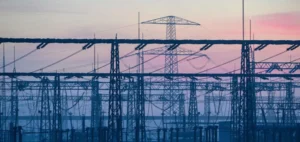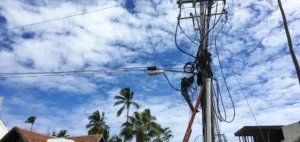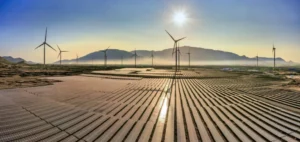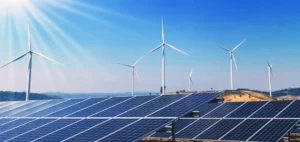On August 30, 2024, the Kenyan power grid suffered a blackout of unusual proportions, plunging the capital Nairobi and six of the eight regions connected to the national grid into darkness.
Kenya Power and Lighting Company (KPLC), operator of the electricity distribution infrastructure, has announced that only the North Rift region and parts of the West are unaffected.
The blackout starts at 9:30 pm local time and affects millions of users across the country.
KPLC issued a statement to the effect that its teams were actively working to restore power, but did not provide details of the cause of the incident. Localized power cuts are relatively common in Kenya, but large-scale outages have become more frequent in recent years, raising concerns about the robustness of the national grid.
In May 2024, several regions were already plunged into darkness for hours.
These successive interruptions highlight shortcomings in the management of energy infrastructures and call into question the resilience of the system.
With each incident, the need to improve preventive maintenance and invest in plant modernization becomes more pressing to ensure the continuity of economic activities and minimize the impact on users.
Jomo Kenyatta airport maintains operations thanks to back-up systems
Despite the extent of the blackout in Nairobi, Jomo Kenyatta International Airport (JKIA), a crucial hub for passenger and freight traffic in East Africa, continues to operate normally.
The Kenya Airports Authority (KAA) confirms that backup generators and other emergency power systems were activated as soon as the power cut occurred.
“The airport’s emergency power systems and generators were activated promptly after the national grid failure, ensuring that a full power supply was maintained without any interruption to services or flight operations,” says KAA on X. This proactivity contrasts with the situation the previous year, when a major outage, also nationwide, caused significant disruption at JKIA due to a problem with a backup generator.
In 2023, this failure led to delays and disrupted airport operations, prompting the authorities to reinforce the capacity of the back-up systems.
JKIA, with 8.8 million passengers and 380,000 tonnes of freight passing through each year, depends on precise management of its energy resources to maintain its position as a regional hub.
Mixed reaction from users and industry observers
Recurrent blackouts in Kenya are causing palpable discontent among users and industry observers alike.
On social networks, criticism of KPLC’s management of the power grid is multiplying.
Many users are expressing frustration at the frequency of interruptions, wondering why these incidents persist despite KPLC’s regular assurances of improved network reliability.
Some Internet users make fun of the company’s acronym, transforming it into “Kenya Poor Lighting Company”, a remark that reflects the loss of confidence on the part of some consumers.
For players in the energy sector, these interruptions highlight structural and organizational challenges that require a rigorous response.
Investments in infrastructure modernization, diversification of energy sources and improved network management are becoming essential to strengthen system resilience.
Repeated blackouts could also affect investment prospects in the country’s energy sector if concrete measures are not taken to remedy these malfunctions.
Towards an enhanced crisis management and maintenance strategy
Faced with this situation, the Kenyan government and stakeholders in the energy sector are being forced to rethink their approach to crisis management and infrastructure maintenance.
Implementing stricter maintenance programs, adopting smart grid technologies and strengthening energy storage capacities are just some of the measures that could reduce the impact of future large-scale blackouts.
Greater attention is also being paid to coordination between public and private players to ensure a more effective and rapid response in the event of an incident.
Efforts to stabilize the grid need to be supported by a coherent energy policy that takes into account not only generation and distribution, but also infrastructure management and back-up systems.
Grid resilience is key to Kenya’s economic development and investor confidence.
Any weakness in this area could jeopardize the country’s growth objectives.
The need for proactive governance and long-term planning is highlighted, as Kenya strives to maintain the stability of its power grid.
Frequent power cuts and their economic impact call for a review of energy infrastructure development strategies to minimize future risks and enhance the country’s energy security.






















